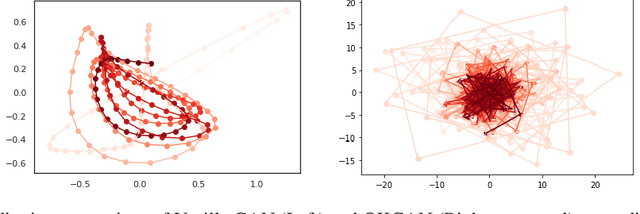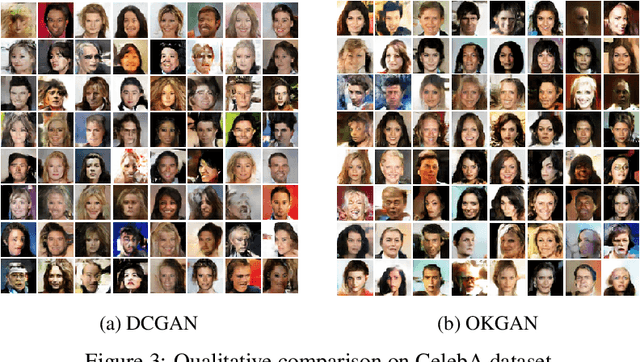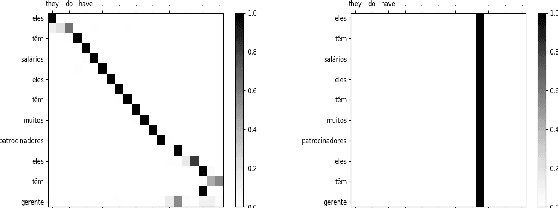Sang Keun Choe
What is Your Data Worth to GPT? LLM-Scale Data Valuation with Influence Functions
May 22, 2024



Abstract:Large language models (LLMs) are trained on a vast amount of human-written data, but data providers often remain uncredited. In response to this issue, data valuation (or data attribution), which quantifies the contribution or value of each data to the model output, has been discussed as a potential solution. Nevertheless, applying existing data valuation methods to recent LLMs and their vast training datasets has been largely limited by prohibitive compute and memory costs. In this work, we focus on influence functions, a popular gradient-based data valuation method, and significantly improve its scalability with an efficient gradient projection strategy called LoGra that leverages the gradient structure in backpropagation. We then provide a theoretical motivation of gradient projection approaches to influence functions to promote trust in the data valuation process. Lastly, we lower the barrier to implementing data valuation systems by introducing LogIX, a software package that can transform existing training code into data valuation code with minimal effort. In our data valuation experiments, LoGra achieves competitive accuracy against more expensive baselines while showing up to 6,500x improvement in throughput and 5x reduction in GPU memory usage when applied to Llama3-8B-Instruct and the 1B-token dataset.
Making Scalable Meta Learning Practical
Oct 23, 2023



Abstract:Despite its flexibility to learn diverse inductive biases in machine learning programs, meta learning (i.e., learning to learn) has long been recognized to suffer from poor scalability due to its tremendous compute/memory costs, training instability, and a lack of efficient distributed training support. In this work, we focus on making scalable meta learning practical by introducing SAMA, which combines advances in both implicit differentiation algorithms and systems. Specifically, SAMA is designed to flexibly support a broad range of adaptive optimizers in the base level of meta learning programs, while reducing computational burden by avoiding explicit computation of second-order gradient information, and exploiting efficient distributed training techniques implemented for first-order gradients. Evaluated on multiple large-scale meta learning benchmarks, SAMA showcases up to 1.7/4.8x increase in throughput and 2.0/3.8x decrease in memory consumption respectively on single-/multi-GPU setups compared to other baseline meta learning algorithms. Furthermore, we show that SAMA-based data optimization leads to consistent improvements in text classification accuracy with BERT and RoBERTa large language models, and achieves state-of-the-art results in both small- and large-scale data pruning on image classification tasks, demonstrating the practical applicability of scalable meta learning across language and vision domains.
Betty: An Automatic Differentiation Library for Multilevel Optimization
Jul 05, 2022



Abstract:Multilevel optimization has been widely adopted as a mathematical foundation for a myriad of machine learning problems, such as hyperparameter optimization, meta-learning, and reinforcement learning, to name a few. Nonetheless, implementing multilevel optimization programs oftentimes requires expertise in both mathematics and programming, stunting research in this field. We take an initial step towards closing this gap by introducing Betty, a high-level software library for gradient-based multilevel optimization. To this end, we develop an automatic differentiation procedure based on a novel interpretation of multilevel optimization as a dataflow graph. We further abstract the main components of multilevel optimization as Python classes, to enable easy, modular, and maintainable programming. We empirically demonstrate that Betty can be used as a high-level programming interface for an array of multilevel optimization programs, while also observing up to 11\% increase in test accuracy, 14\% decrease in GPU memory usage, and 20\% decrease in wall time over existing implementations on multiple benchmarks. The code is available at http://github.com/leopard-ai/betty .
Online Kernel based Generative Adversarial Networks
Jun 19, 2020



Abstract:One of the major breakthroughs in deep learning over the past five years has been the Generative Adversarial Network (GAN), a neural network-based generative model which aims to mimic some underlying distribution given a dataset of samples. In contrast to many supervised problems, where one tries to minimize a simple objective function of the parameters, GAN training is formulated as a min-max problem over a pair of network parameters. While empirically GANs have shown impressive success in several domains, researchers have been puzzled by unusual training behavior, including cycling so-called mode collapse. In this paper, we begin by providing a quantitative method to explore some of the challenges in GAN training, and we show empirically how this relates fundamentally to the parametric nature of the discriminator network. We propose a novel approach that resolves many of these issues by relying on a kernel-based non-parametric discriminator that is highly amenable to online training---we call this the Online Kernel-based Generative Adversarial Networks (OKGAN). We show empirically that OKGANs mitigate a number of training issues, including mode collapse and cycling, and are much more amenable to theoretical guarantees. OKGANs empirically perform dramatically better, with respect to reverse KL-divergence, than other GAN formulations on synthetic data; on classical vision datasets such as MNIST, SVHN, and CelebA, show comparable performance.
On Leveraging the Visual Modality for Neural Machine Translation
Oct 07, 2019



Abstract:Leveraging the visual modality effectively for Neural Machine Translation (NMT) remains an open problem in computational linguistics. Recently, Caglayan et al. posit that the observed gains are limited mainly due to the very simple, short, repetitive sentences of the Multi30k dataset (the only multimodal MT dataset available at the time), which renders the source text sufficient for context. In this work, we further investigate this hypothesis on a new large scale multimodal Machine Translation (MMT) dataset, How2, which has 1.57 times longer mean sentence length than Multi30k and no repetition. We propose and evaluate three novel fusion techniques, each of which is designed to ensure the utilization of visual context at different stages of the Sequence-to-Sequence transduction pipeline, even under full linguistic context. However, we still obtain only marginal gains under full linguistic context and posit that visual embeddings extracted from deep vision models (ResNet for Multi30k, ResNext for How2) do not lend themselves to increasing the discriminativeness between the vocabulary elements at token level prediction in NMT. We demonstrate this qualitatively by analyzing attention distribution and quantitatively through Principal Component Analysis, arriving at the conclusion that it is the quality of the visual embeddings rather than the length of sentences, which need to be improved in existing MMT datasets.
Audio Cover Song Identification using Convolutional Neural Network
Dec 01, 2017



Abstract:In this paper, we propose a new approach to cover song identification using a CNN (convolutional neural network). Most previous studies extract the feature vectors that characterize the cover song relation from a pair of songs and used it to compute the (dis)similarity between the two songs. Based on the observation that there is a meaningful pattern between cover songs and that this can be learned, we have reformulated the cover song identification problem in a machine learning framework. To do this, we first build the CNN using as an input a cross-similarity matrix generated from a pair of songs. We then construct the data set composed of cover song pairs and non-cover song pairs, which are used as positive and negative training samples, respectively. The trained CNN outputs the probability of being in the cover song relation given a cross-similarity matrix generated from any two pieces of music and identifies the cover song by ranking on the probability. Experimental results show that the proposed algorithm achieves performance better than or comparable to the state-of-the-art.
 Add to Chrome
Add to Chrome Add to Firefox
Add to Firefox Add to Edge
Add to Edge